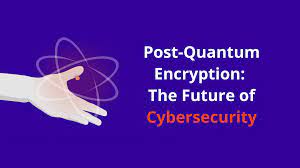Introduction
In the ever-evolving landscape of cybersecurity, the advent of quantum computing poses both challenges and opportunities. Quantum cryptography emerges as a promising solution to secure communication in the quantum era. This article explores the potential of quantum cryptography and its transformative impact on bolstering cybersecurity in the age of quantum computing.
Quantum Computing Threats
Traditional cryptographic methods, which rely on mathematical complexity for security, face a significant threat from quantum computers. Quantum computers, with their ability to perform complex calculations exponentially faster than classical computers, could potentially break widely used encryption algorithms, compromising the confidentiality of sensitive information.
Quantum Key Distribution (QKD)
Quantum cryptography introduces a revolutionary approach to secure communication through Quantum Key Distribution (QKD). QKD leverages the principles of quantum mechanics to establish a secure key between two parties. The unique properties of quantum states ensure that any attempt to intercept the key would disturb the quantum states, alerting the parties to potential eavesdropping.
Unbreakable Quantum Entanglement
At the core of QKD is the phenomenon of quantum entanglement. When two particles become entangled, the state of one particle directly influences the state of the other, regardless of the distance between them. This property enables the creation of cryptographic keys with an unprecedented level of security, making them theoretically unbreakable.
Overcoming Eavesdropping Challenges
Quantum cryptography provides a mechanism for detecting eavesdropping attempts. The act of measuring quantum states inherently alters their properties, making it impossible for an eavesdropper to intercept the key without leaving a trace. This built-in detection feature ensures the integrity of the communication channel.
Quantum-Safe Cryptography
As quantum computers advance, the need for quantum-safe or post-quantum cryptography becomes imperative. Quantum-safe cryptographic algorithms are designed to resist attacks from both classical and quantum computers. Integrating these algorithms alongside QKD ensures a comprehensive and future-proof cybersecurity strategy.
Practical Implementation Challenges
While the theoretical foundations of quantum cryptography are robust, practical implementation poses challenges. Maintaining the delicate quantum states over long distances and in real-world communication scenarios is complex. Ongoing research focuses on developing scalable and practical quantum cryptographic systems for widespread adoption.
- Quantum Cryptography in Real-World Applications
Several research initiatives and commercial endeavors are exploring the integration of quantum cryptography into real-world applications. Quantum communication networks, quantum-secured financial transactions, and quantum key distribution for secure data transfer are among the areas where quantum cryptography is making tangible strides.
Global Research and Collaboration
The development of quantum cryptography involves global research efforts and collaboration. Governments, research institutions, and private enterprises are investing in quantum research to harness its potential for enhancing cybersecurity. Initiatives like the development of quantum communication satellites underscore the global nature of quantum cryptographic advancements.
Quantum Cryptography and the Future Internet
The potential widespread adoption of quantum cryptography has implications for the future of the internet. A quantum internet, secured by quantum cryptographic protocols, could redefine how information is transmitted, ensuring a level of security that withstands the challenges posed by quantum computing threats.
Ethical and Regulatory Considerations
As quantum cryptography progresses, ethical considerations and regulatory frameworks become essential. Issues such as privacy, the responsible use of quantum technology, and international standards for quantum-safe cryptography require careful attention. Establishing ethical guidelines and regulatory frameworks will be crucial in shaping the responsible deployment of quantum cryptographic solutions.
Conclusion
In conclusion, quantum cryptography emerges as a beacon of hope in the face of evolving cybersecurity threats posed by quantum computers. The potential to secure communication channels through the principles of quantum mechanics brings a new dimension to the field of cryptography. While challenges persist in practical implementation, ongoing research and global collaboration pave the way for a quantum-secured future. As quantum cryptography evolves, it holds the promise of safeguarding sensitive information in a quantum-powered world, ensuring that cybersecurity remains resilient in the face of technological advancements.
